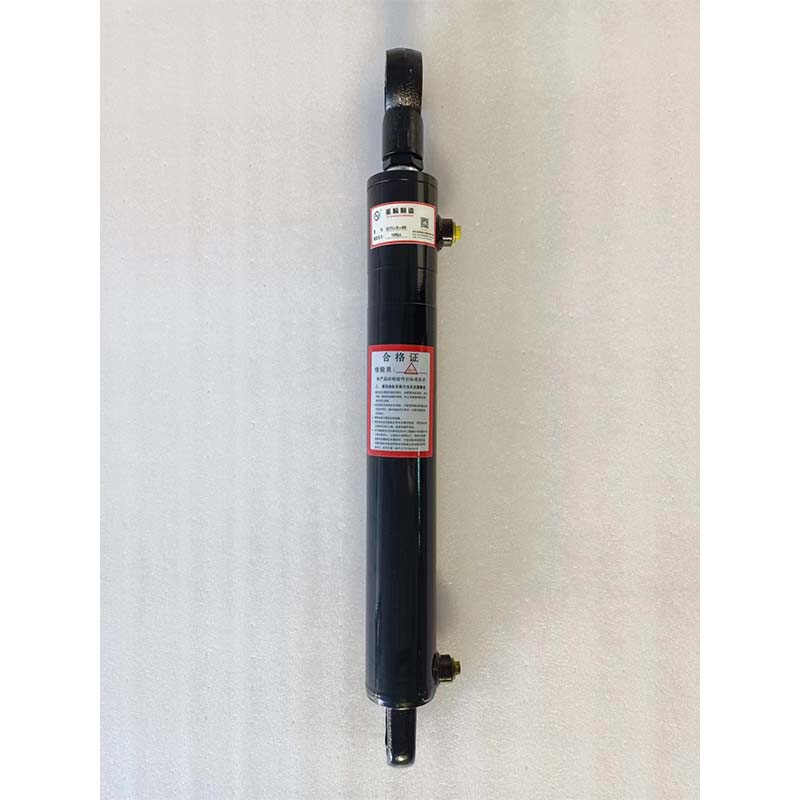Nov . 07, 2024 05:42 Back to list
Hydraulic Cylinder Tools for Efficient Performance and Versatile Applications in Heavy Machinery
Understanding Hydraulic Cylinder Tool Products
Hydraulic cylinder tools are critical components widely used in various industrial applications, ranging from construction and engineering to automotive repair and manufacturing. This article explores the key aspects of hydraulic cylinders, their types, applications, and importance in different sectors.
What is a Hydraulic Cylinder?
A hydraulic cylinder is a mechanical device that converts hydraulic energy into linear mechanical energy. In simple terms, it consists of a cylindrical barrel, a piston, and a rod. When hydraulic fluid is pumped into the barrel, it exerts pressure on the piston, causing it to move, which in turn moves the rod. The operation is both efficient and powerful, making hydraulic cylinders indispensable tools in many applications.
Key Components of Hydraulic Cylinders
1. Barrel The barrel is the main body of the hydraulic cylinder that houses the piston. It is designed to withstand high pressure and is typically made from strong materials like steel or aluminum.
2. Piston The piston moves within the barrel when hydraulic fluid is introduced. The design and size of the piston can vary based on the intended application and required force output.
3. Rod Connected to the piston, the rod extends out of the cylinder and is responsible for transferring the force generated by the hydraulic system to the desired application.
4. End Caps and Seals The end caps seal the cylinder and prevent hydraulic fluid from leaking. High-quality seals are vital for maintaining pressure and ensuring the cylinder operates efficiently.
5. Ports These are openings that allow hydraulic fluid to enter and exit the cylinder, facilitating the extension and retraction of the piston.
Types of Hydraulic Cylinders
There are several types of hydraulic cylinders, each designed for specific applications
1. Single-Acting Cylinders These cylinders use hydraulic pressure to move the piston in one direction. The return stroke occurs through a spring mechanism or by external forces.
hydraulic cylinder tool products

2. Double-Acting Cylinders These allow hydraulic pressure to act on both sides of the piston, providing greater control and force in both extending and retracting strokes.
3. Telescopic Cylinders Ideal for applications where space is limited, these cylinders extend and retract by nesting multiple stages within one another, allowing for significant length variation.
4. Rotary Actuators These devices convert hydraulic pressure into rotational motion, often used in applications requiring precise angular movement.
Applications of Hydraulic Cylinders
Hydraulic cylinders are employed in a wide range of industries, including
- Construction Used in excavators, bulldozers, and cranes, hydraulic cylinders allow heavy machinery to lift, dig, and move materials efficiently. - Automotive In vehicle lifts and repair tools, hydraulic cylinders provide the necessary lifting power for maintenance and repairs.
- Manufacturing Hydraulic pressing machines utilize cylinders for shaping, molding, and assembling materials, ensuring precision and efficiency.
- Aerospace Hydraulic systems control various functions in aircraft, including landing gear and wing flaps, highlighting the importance of reliability in critical applications.
Importance of Hydraulic Cylinder Tool Products
The significance of hydraulic cylinder tools cannot be overstated. They enhance efficiency and productivity across various sectors by enabling heavy lifting and precise movements. Moreover, their ability to generate substantial force while maintaining controllability makes them suitable for both intricate tasks and robust applications.
In addition to performance enhancements, hydraulic cylinders also contribute to safety in industrial operations. Their design minimizes the risk of mechanical failure, ensuring that tasks can be completed with less risk of accidents. Regular maintenance and the use of high-quality hydraulic cylinder products are essential to maximize these benefits and ensure optimal performance.
Conclusion
In conclusion, hydraulic cylinder tool products play a vital role across numerous industries. Understanding their components, types, and applications is essential for professionals who work with hydraulic systems. As technology continues to advance, hydraulic cylinders will likely become even more efficient and versatile, further solidifying their status as indispensable tools in modern industrial operations. Whether in construction, automotive, or manufacturing, hydraulic cylinders will continue to drive progress and innovation, making them a critical focus for engineers and technicians alike.
-
Fork Lift Power Units - Hebei Shenghan | Efficiency, Reliability
NewsJul.13,2025
-
1.5-Ton Turbocharged Cylinder-Hebei Shenghan|Hydraulic Solution,Energy Efficiency
NewsJul.13,2025
-
Auto Hoist Power Units-Hebei Shenghan|Efficiency&Industrial Lifting
NewsJul.13,2025
-
Double Acting Power Units-Hebei Shenghan|Hydraulic Solutions,Industrial Efficiency
NewsJul.13,2025
-
1.5 Ton Lifting Cylinder 70/82-40-290-535 - High-Performance Hydraulic Solution | Hebei Shenghan
NewsJul.13,2025
-
Fork Lift Power Units - Hebei Shenghan | Efficiency&Reliability
NewsJul.13,2025
